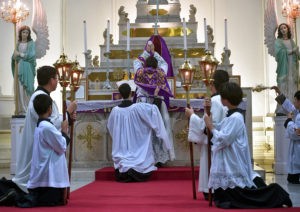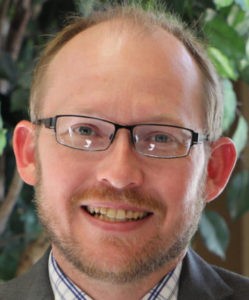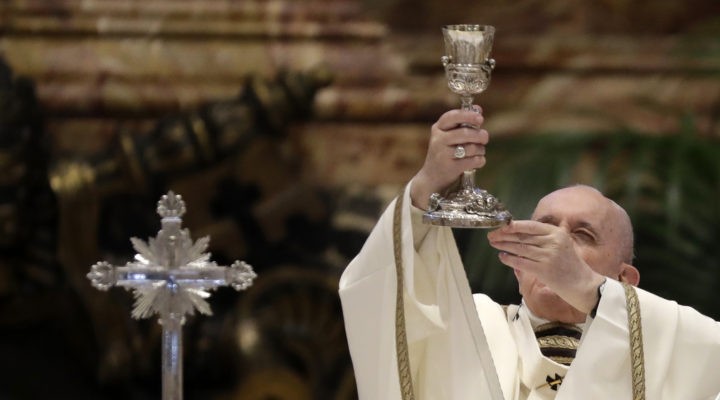About two months ago, Pope Francis issued a statement that many readers of Baptist News Global may not have noticed. In Traditionis Custodes, the pope limited the use of what is commonly called “the Latin Mass” or “traditional Latin Mass” in Catholic worship services. Non-Catholics, except for the exceptionally curious, likely perceived the document as part of an obscure Catholic debate and ignored or passed over it in favor of something more pressing in religious or political news.
However, among American Catholics — where 40% of these worship services occur — the pope’s statement ignited a flood of reactions and responses. Some accused the Vatican of destroying the true church enshrined in the Latin version of the liturgy — the customary order of worship — even seeing Pope Francis as an anti-traditional bully (as opposed to his two predecessors, Benedict XVI and John Paul II). Others described the move as justified, marking Francis’ legacy for generations.
Some accused the Vatican of destroying the true church enshrined in the Latin version of the liturgy.
What is going on here? What did Pope Francis actually say and do in this statement? What does it mean for Catholics? And finally, is there anything Baptists and other non-Catholics can learn from Francis’ decision?
Some history about recent Catholic worship
First, the pope’s letter belongs to a wider context of Catholic developments in the last century. Leading up to the Second Vatican Council (1962-1965), every Catholic worship service (known as the Mass) was celebrated in Latin. The particular order and structure of this service had been passed down with very few revisions since the Council of Trent in the 16th century.
Beginning with the Second Vatican Council (also called Vatican II), the church sought to reform the liturgy so that it could better reflect the work of the Council. As a result, a revised version of the Mass was constructed with the goal, as Vatican II’s document on the liturgy states, of “full active participation of all God’s holy people in these liturgical celebrations.” This ushered in several important changes to the liturgy when the revision was completed in 1970.

The Latin mass at St Joesph’s Church allows the participants to rediscover the roots of their faith with the mass having a big focus on the Gregorian chant, prayer and silent meditation.
With his back facing the congregation, the priest lifts a piece of bread, which is symbolic of the body of christ.In other masses, the priest usually faces the congregation as he carries out the process. (Singapore Press via AP Images)
One of the most significant developments is that, even though the older practice of IiIthe presider facing away from the congregation was still permitted, Mass began to be widely celebrated with the presider consistently facing the people. Additionally, Vatican II allowed for the extended use of vernacular languages in the liturgy, which had been previously very limited. Hence, the liturgy was translated into various everyday languages, including English.
Naturally, there were many Catholics for whom the older version of the liturgy still had meaning, and so it was allowed to continue initially with the idea that new generations eventually would find their way to the revised version of the Mass. However, the older version did not go away as anticipated.
While Paul VI, the pope who presided over these revisions, did make these initial exceptions, he did not widen their scope, for fear that the older Mass would become a lightning rod for resistance to the Council altogether. Those connected to the older Latin worship were bolstered by several priests and bishops who defended it against what they saw as an abandonment of tradition. Over decades of rocky relations, the two popes who preceded Francis attempted reconciliation through various means.
In 1984, John Paul II authorized diocesan bishops to allow celebrations of the pre-conciliar Mass, thereby widening its use. In 2007, Benedict XVI issued a document that emphasized that the older and revised celebrations of the Mass are two forms of the same common liturgy. Moreover, the power to authorize these services moved from the bishop to any priest.
According to Benedict, the pre-Vatican II Mass was an “extraordinary form” of the “ordinary form” of worship found in the post-Vatican II Mass. As such, they were “two usages of the one Roman rite.” Alongside this declaration, he also wrote to the bishops that they should carefully observe if any difficulties arise in their dioceses in the years following his decision.
What is Pope Francis saying in Traditionis Custodes?
There are several specific directives given by Francis related to the older version of the Mass.
First, he removes the “extraordinary form” designation provided by Pope Benedict. There is one form of the Mass — the post-Vatican II form.
Second, he restores to bishops the authority to permit pre-conciliar worship services in their dioceses.
There is no doubt that this is a strong statement, one that a Catholic commentator speculated might be the most significant in Francis’ papacy.
Third, he gives some guidance for the bishops in this matter — not authorizing new communities gathered around the older liturgy, ensuring that those celebrating the older Mass do not see it as superior to the newer Mass, and moving these services from shared parish church spaces altogether. Among other instructions, Francis also restricts newly ordained priests from performing the older liturgy unless that priest’s bishop gets permission from the Vatican directly.
There is no doubt that this is a strong statement, one that a Catholic commentator speculated might be the most significant in Francis’ papacy. In short, the pope has aimed to significantly curtail the use of the pre-conciliar Mass in the future. However, the details discussed above are important, because they help us understand his decision and its significance.
What does this mean?
What is at stake in this Catholic conversation? A few clarifications will be helpful here. Opponents of Pope Francis’ actions like to refer to the “Traditional Latin Mass,” but that phrase is contested because Francis’ decision rests on a particular understanding of tradition. Moreover, the central issue in this debate is not the language of the Mass. In fact, the 1970 Catholic worship manual that emerged from Vatican II was first written in Latin and then translated into vernacular languages. Indeed, it is often celebrated in Latin at the Vatican. In other words, Pope Francis has not removed all Masses said in Latin. The language merely obscures the real issue.
More important is that, for a significant number, the pre-conciliar service has become a symbol of rejecting the theological and liturgical developments of Vatican II. That is, many saw the extraordinary form of the Mass as the only true liturgy of the church. This was precisely the problem that Paul VI feared in the 1970s, and it is what motivates Pope Francis’ actions now.
For a significant number, the pre-conciliar service has become a symbol of rejecting the theological and liturgical developments of Vatican II.
Additionally, there is no disputing that, instead of remaining a small yet dwindling segment of the Catholic faithful, the wider permissibility for the older Latin liturgy since 2007 had allowed it to grow into a movement, especially in the United States, England and France. Even sympathetic figures in the church have described this faction of the church as out of control.
What can non-Catholics learn?
What might non-Catholics take away from this Catholic conversation?
First, Pope Francis is clearly concerned about the unity of the church. This is one of the four marks of the church, along with holiness, catholicity and apostolicity. Non-Catholics can learn a bit from this situation about what it takes to pursue unity. The pope makes reference to the ancient church axiom lex orandi, lex credendi, which means “what is prayed is what is believed.”
Too often, we assume that unity can be purely spiritual, eclipsing an endless sea of diversity. Or we think that being in close proximity can be a sign of unity on its own. Francis clearly disagrees with these perspectives and argues that there must be active movement toward unity for it to exist at all. In other words, physical unity as well as spiritual unity is necessary.
Second, Francis’ decisions indicate that having two divergent forms of worship actually can contribute to divergent theologies that threaten to divide the church. In his supplementary letter to the bishops, Francis writes that the generosity of Benedict — whose own document was also aimed at promoting unity — became an opportunity to exploit differences, reinforce existing disputes and leave the church in danger of deeper division. Similar to Paul’s first letter to the Corinthians, where some claimed to be followers of Paul, Apollos, Cephas or even Jesus, quarrelling factions have emerged. He notes that the bishops saw a link between many of those Catholics who favored the older liturgy and those who rejected the authority of the Second Vatican Council.
To free-church folks who have experienced disputes about style of worship, there are some insights here.
To free-church folks who have experienced disputes about style of worship, there are some insights here.
There may, in fact, be times and situations where distinct styles can move toward the same set of beliefs and congregational unity. Legitimate diversity is still possible. Even Catholics retain some freedom and variation in the Mass beyond the use of vernacular languages. However, as Francis indicates, there is a need to observe and evaluate whether unity truly exists within that diversity.
This 2021 decision was preceded by the Vatican surveying Catholic bishops about the state of the pre-conciliar Mass. While the results of the survey were not made available, the pope noted that the situation it revealed saddened him and persuaded him of the need to step in.
This is pastoral theology at work. Francis sees pastors as shepherds not only of individual people but of the whole church. This presents a wider scope of responsibility to non-Catholic ministers as well, encouraging them to care for and to contribute to the unity of the church beyond the boundaries of their local congregations.
Finally, tradition is a major part of this conversation. The groups favoring the Latin Mass see its use as the only true tradition. Safeguarding tradition, for many of them, means the continued use of this liturgy. In response, Francis has titled his statement “Guardians of Tradition” in reference to the bishops of the church and the role they play in helping the church embody the legacy of Vatican II.
The pope’s decision, then, reflects a different understanding of tradition.
The pope’s decision, then, reflects a different understanding of tradition. Tradition is not a static object, unchanged by time or place. Instead, tradition is handed on over the years, but also responds to the needs of each era. Francis quotes from the Second Vatican Council’s document on revelation to declare that tradition “comes from the apostles” and “develop(s) in the church with the help of the Holy Spirit.”
There is certainly continuity and connection with the past, but that does not rule out the possibility of change and development in the future. This view of tradition is likely different than what we normally encounter, but it is insightful and useful for Catholics and non-Catholics alike, allowing for continued growth and development without seeing this as a radical break from what came before.
Even if the details of this situation still seem far removed from our church life, we should pray for our Catholic brothers and sisters. As many of us know from experience, embracing legitimate diversity while struggling toward unity is not easy. Nonetheless, it is necessary for the whole church to move toward that horizon.

Derek Hatch
Derek C. Hatch serves as associate professor of religion and holds the Endowed Chair of Baptist Studies at Georgetown College in Georgetown, Ky. He previously taught at Howard Payne University in Texas. He holds degrees from East Texas Baptist University, George W. Truett Theological Seminary at Baylor University, and a Ph.D. in theology from the University of Dayton.
Related articles:
With a Catholic president in office, America’s bishops threaten to sanction him over abortion
‘Francis effect’ boosting Catholic Church’s image for U.S. Protestants


